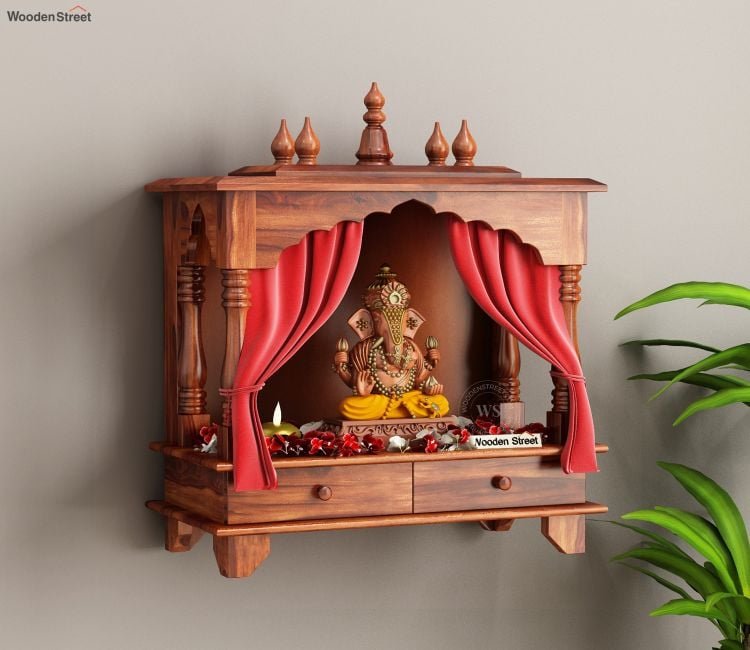A home is more than just walls and furniture—it’s a reflection of your inner world, your beliefs, and your values. For many Indian households, a pooja mandir for home represents a deep connection to tradition, spirituality, and daily mindfulness. Whether you follow a structured ritual or simply light a diya each morning, having a dedicated temple for home helps create a space of calm and reflection in the midst of daily life.
Designing this sacred corner may seem simple, but thoughtful planning can truly enhance its purpose and presence. Here’s how to create a peaceful, sacred space in your home with a mandir for home that suits both your style and spiritual needs.
Understand the Importance of a Sacred Space
Before selecting or setting up a pooja mandir, it helps to understand why this space matters. A mandir for home is not just for rituals—it’s a spiritual anchor that can foster inner peace and mindfulness. It’s a place to begin your day with intention, or to end it with gratitude. And while the size or style of the mandir may differ from home to home, the essence remains the same: a space dedicated to spiritual energy.
In today’s fast-paced world, having a tranquil corner where you can disconnect and reconnect with your inner self is a gift in itself.
Choose the Right Location
The placement of your pooja mandir for home plays a crucial role in maintaining a peaceful ambiance. According to traditional principles like Vaastu Shastra:
-
The northeast direction is considered the most auspicious for placing a mandir.
-
Avoid placing the mandir directly under a staircase, or against walls that are shared with bathrooms.
-
Ensure the space has natural light or gentle artificial lighting for a welcoming vibe.
Even if you don’t strictly follow Vaastu, it’s a good idea to place your temple for home in a quiet, clutter-free part of the house—away from distractions and noise.
Select the Right Style of Temple
Today, there’s a wide range of wooden temple for home options that cater to different needs—ranging from traditional hand-carved structures to sleek, modern designs. Consider these types based on your space and preferences:
1. Wall-Mounted Temples
Perfect for apartments or small homes, wall-mounted mandirs save space while still offering a complete setup for your spiritual needs.
2. Freestanding Wooden Temples
If you have more room, a classic wooden temple for home with drawers or shelves offers both aesthetic appeal and practical storage.
3. Compact Corner Units
For those looking to utilize unused corners, compact mandir units designed for corners are both elegant and functional.
Choose a design that harmonizes with your home’s interiors while still standing out as a sacred space.
Materials That Reflect Spiritual Warmth
Wood is the most preferred material for mandirs, not only for its durability but also for its natural warmth and grounding qualities. A wooden temple for home in finishes like teak, sheesham, or mango wood adds richness and authenticity to the space.
Some homeowners also prefer marble or stone temples, especially for a more divine and pristine look. However, wooden mandirs blend easily with most interior styles—from ethnic to modern.
If you want a personal touch, look for customizable options with intricate carvings, latticework, or traditional domes and arches.
Add Thoughtful Design Elements
The key to creating a peaceful mandir lies in the small details. Here are a few suggestions that can elevate your sacred space:
-
Lighting: Use soft, warm-toned LED lights or traditional oil lamps to add a serene glow.
-
Back Panels: Consider adding a textured or engraved backdrop to enhance the spiritual theme.
-
Storage: Choose a temple for home with drawers or shelves to neatly store prayer items like incense sticks, oil, matchboxes, and scriptures.
-
Sacred Symbols: Incorporate Om symbols, bells, or lotus motifs to increase the spiritual aura of the space.
Decor and Arrangement Tips
Once the structure is in place, arranging your pooja mandir with intention is just as important.
-
Keep It Simple: Avoid overcrowding the mandir with too many idols or items. Keep it clean and spacious.
-
Maintain Balance: Arrange the deities symmetrically and keep daily pooja items organized.
-
Use Natural Elements: Brass diyas, copper vessels, and fresh flowers add authenticity and natural energy to the space.
-
Ritual Consistency: Even a small act like lighting incense daily brings life to the mandir and keeps the energy flowing.
Maintain Cleanliness and Sanctity
Cleanliness is vital when it comes to your pooja mandir for home. It’s not just about hygiene—it’s about respect for the sacred space.
-
Wipe down surfaces daily.
-
Replace offerings like flowers or water regularly.
-
Keep the area free of dust, clutter, or unrelated objects.
Cleanliness also extends to the mind—sitting quietly for a few minutes at your mandir can be a simple, yet powerful act of mindfulness.
Modern Homes, Traditional Hearts
Modern living doesn’t have to come at the cost of tradition. A well-designed mandir for home can blend beautifully into modern interiors—adding spiritual depth without disrupting your aesthetic.
Whether you choose a minimal wooden shelf in a quiet corner or a richly carved wooden temple for home, what matters most is how the space makes you feel. It should feel calming, grounding, and sacred—no matter how big or small.
Final Thoughts
A pooja mandir is more than just furniture—it’s a place of devotion, peace, and intention. In a world filled with screens, noise, and fast-paced routines, having a quiet, dedicated space for reflection can make a meaningful difference in your daily life.
Take time to thoughtfully design your temple for home—keeping both aesthetics and spiritual purpose in mind. Whether it’s a simple wall-mounted shelf or a traditional wooden structure, your mandir should reflect your journey, your beliefs, and your connection to something higher.
And in that stillness, you’ll find something truly special—a peaceful place where you feel centered, connected, and at home.











Leave a Reply